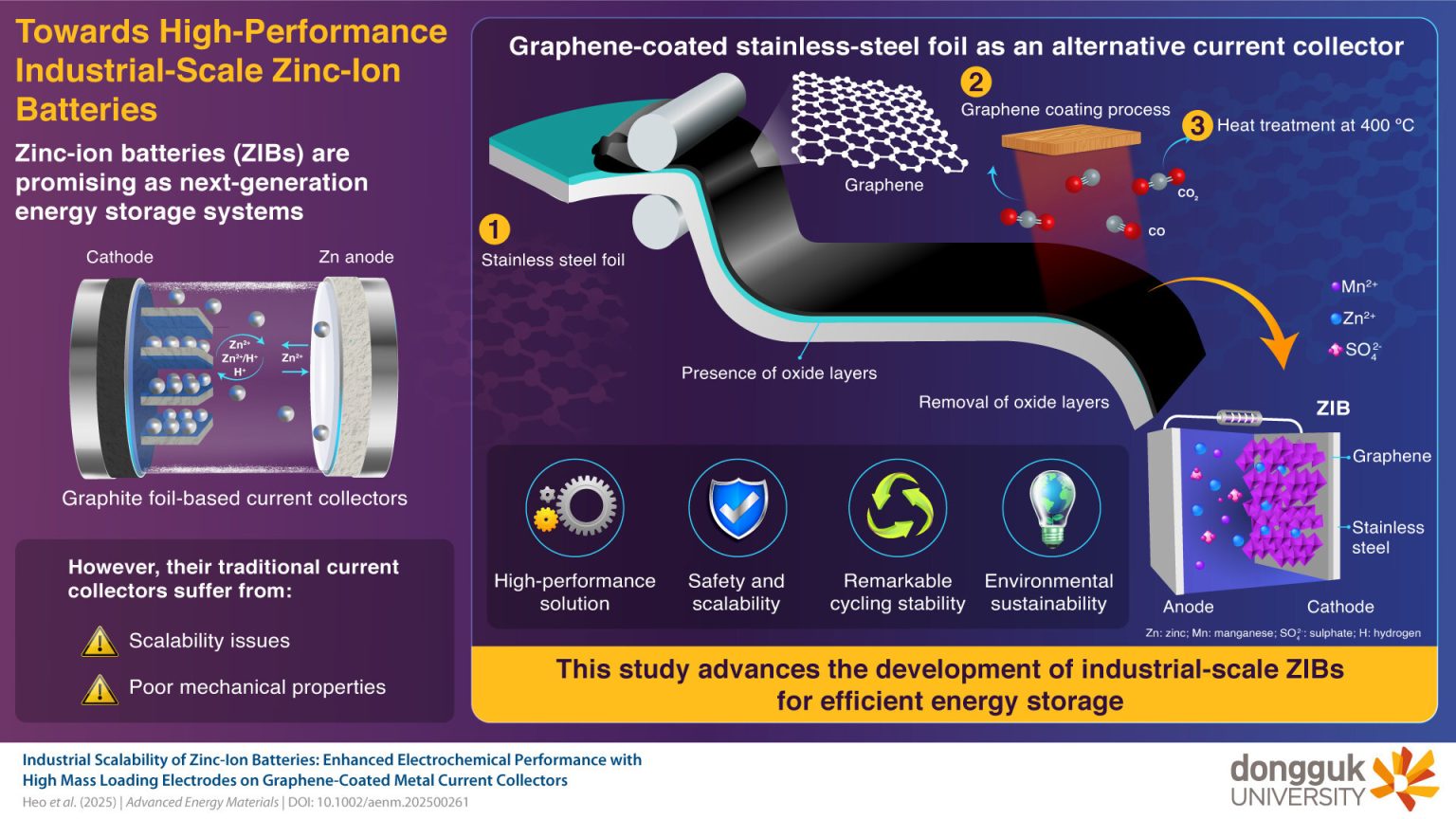As global demand for scalable, fire-safe, and cost-effective energy storage intensifies, lithium-ion technologies—despite their dominance—are facing growing scrutiny over thermal instability and sustainability concerns. A team of Korean researchers may now be offering a viable alternative through a breakthrough in zinc-ion battery architecture, anchored by a novel graphene-coated current collector.
Published in Advanced Energy Materials, the study introduces a graphene-coated stainless-steel foil (G@SSF-400) developed by Associate Professor Geon-Hyoung An and colleagues at Dongguk University. The team’s innovation addresses two of the most pressing industrial limitations in zinc-ion batteries: corrosion and mechanical instability of conventional collectors such as graphite foil.
Unlike lithium-ion batteries, which rely on volatile organic electrolytes, zinc-ion batteries utilize aqueous electrolytes. This makes them inherently non-flammable and more environmentally benign. Zinc also boasts significant material advantages: it is abundant, non-toxic, and has a high theoretical capacity. However, commercial scaling has long been hindered by collector degradation and poor conductivity under high loading conditions—problems this study directly tackles.
The results are notable. Batteries using G@SSF-400 showed specific capacities exceeding 1 mAh/cm² and retained 88.7% capacity after 1,500 cycles—an indicator of strong long-term stability. Even under high-mass loading, the batteries maintained stable operation, a key requirement for industrial and utility-scale applications.
This development also aligns with growing momentum around diversifying battery chemistries. In a global energy storage market projected to exceed 1 TWh annually by 2030, according to BloombergNEF, technologies beyond lithium are gaining attention for grid applications, particularly in underserved or high-risk environments.
Zinc-ion batteries offer a compelling proposition here. They eliminate the fire risks of lithium-ion systems and do not require critical minerals like cobalt or nickel. Yet until now, they lacked the manufacturing scalability and electrochemical reliability to compete at industrial levels. The Korean team’s integration of graphene—a material known for its high electrical conductivity and mechanical strength—bridges this gap.
Moreover, the G@SSF-400 approach supports roll-to-roll manufacturing, enabling integration into existing battery production infrastructure with minimal retrofitting. That industrial compatibility enhances its commercial readiness and may reduce capital expenditure requirements compared to entirely new battery lines.
Stay updated on the latest in energy! Follow us on LinkedIn, Facebook, and X for real-time news and insights. Don’t miss out on exclusive interviews and webinars—subscribe to our YouTube channel today! Join our community and be part of the conversation shaping the future of energy.





